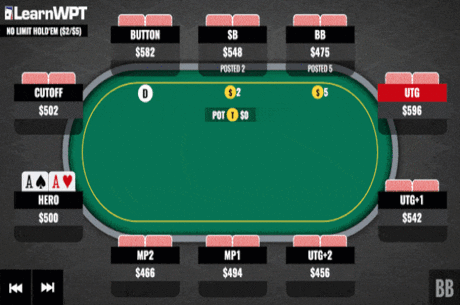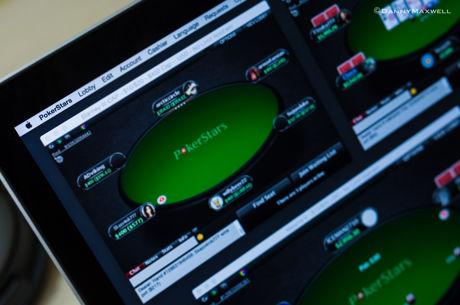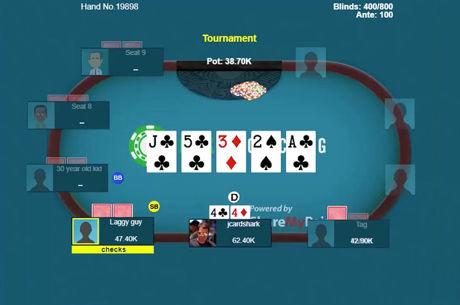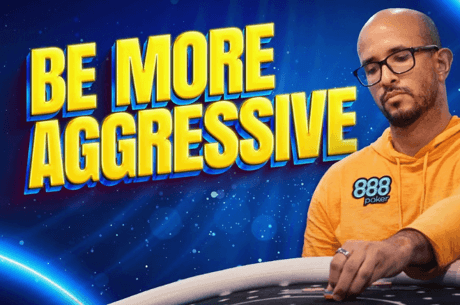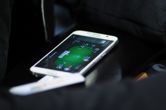To Catch a Bluff: Looking Back at a Hand of 100NL
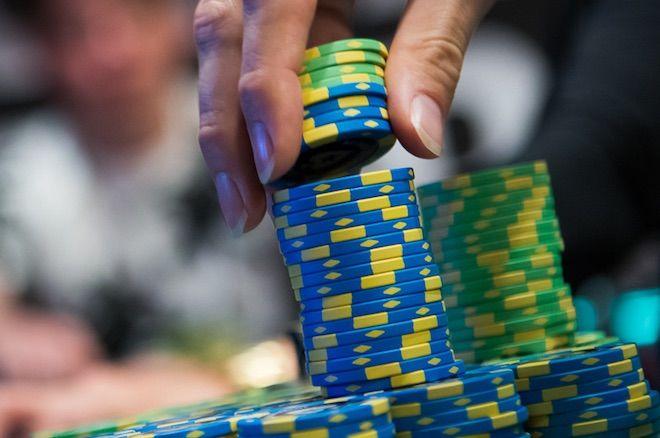
Sometimes the cards that turn up in the end don't reveal too much. Other times they explain everything.
While a hand is playing out, it can be a challenge to know what hands you should bluff with, or what are the hands with which you can make a hero call. These things can be hard to realize in the heat of the moment, though much easier to figure out in retrospect.
Making big calls isn't always about having a set or two pair, if you have a key card in your hand. The following hand provides us an illustration of that point �� a hand that in retrospect also provides us lessons concerning both (1) when not to bluff and (2) when to make such big, bluff-catching calls.
The Cold-Four Bet
This hand of online poker came at the six-handed 100NL tables, with the blinds $0.50/$1. Action folded around to the button, who tried to make off with the blinds by raising to $2.50. The small blind wasn't having it, though, and three-bet to $10.
That's when the big blind, playing with a deep stack, cold four-bet to $18.50. The button folded and the small blind who had about $160 to start the hand called for just $8.50 more,
Flop, Turn, River
On a 6?2?3? flop the small blind checked, then the big blind fired $15.50 into nearly $40, a reasonably sized bet that the small blind called. We'd expect small blind's check-call range to look like any pair, some flush draws, and some strong overcard hands, like A?Q?, A?J?, and maybe an A?5?.
The turn brought the Q?, completing the flush draw immediately. On this card the action checked through. Now the small blind could have the nuts, but the big blind's range seems capped by the turn check.
This brings us to the 8? river, perhaps the blankest possible card in this exact situation.
With exactly $70 in the pot, the small blind checked once more and the big blind bet $45. The small blind then decided it was an apt time for a check-raise all-in to $125, only about $80 more.
Did the small blind have the nuts on the turn and checked a third time on the river?
The big blind was being given a really great price, needing to call $80 to win $240. In this situation if the player can beat a bluff 25 percent of the time or more, a call is in order.
Frequencies and Hands
When the small blind is bluffing, the big blind doesn't know what the small blind is bluffing with. Maybe some hands like A?Jx that called before the flop and took a card off, or perhaps a hand like 4x4x that can't call this river but has showdown value if it checks down.
When the big blind chooses to call, his hand actually should not matter much as long as it falls somewhere on the spectrum of one pair to a straight. That's because the small blind either has a flush or a bluff, almost all of the time.
If the small blind has nothing, say, 40 percent of the time, the big blind should always be calling with QxJx here. And if the small blind has nothing 20 percent of the time, the big blind should fold a straight every time.
Just One Thing
The big blind did call and with a hand that is an exception to the above rules �� A?Q?. This hand presents us one of those classic bluff-catching spots, because big blind held the card that made it certain that the small blind could not have the hand the player was representing.
Now the math changes somewhat, because in order for big blind to get away from this combination and bet-fold, he has to start making judgments about the small blind's ability to check-shove with smaller flushes or (hard to have) straights.
If the big blind thinks the small blind is so capable, perhaps the big blind can fold, assuming also that the big blind judges the small blind isn't bluff-happy. That's a lot of assumptions.
Meanwhile if the big blind doesn't see the small blind going for value with a wide check-shoving range, then the question of bluffs diminishes in relevance.
Face Up
The small blind turned over 6?5?, which, in fairness, is a hand that makes a lot of sense postflop.
The small blind called the flop with a pair and a gutshot straight draw, hit a bad turn, then blanked out on the river. The small blind does block some straights, but this is almost irrelevant in this exact scenario since the big blind would have had to four-bet 5x4x preflop and then check it back on the turn for that to matter.
The small blind held a hand that had showdown value until big blind decided to bet the river. Then �� after the big blind's bet �� the small blind didn't, but decided to try and win the pot, anyway.
Maybe the small blind talked himself into believing the 5? in his hand was relevant to the action. It wasn't. The A? in the big blind's hand, however, absolutely was relevant. Looking back, it is hard to see how he could have possibly gotten away from scooping the $320 pot.

